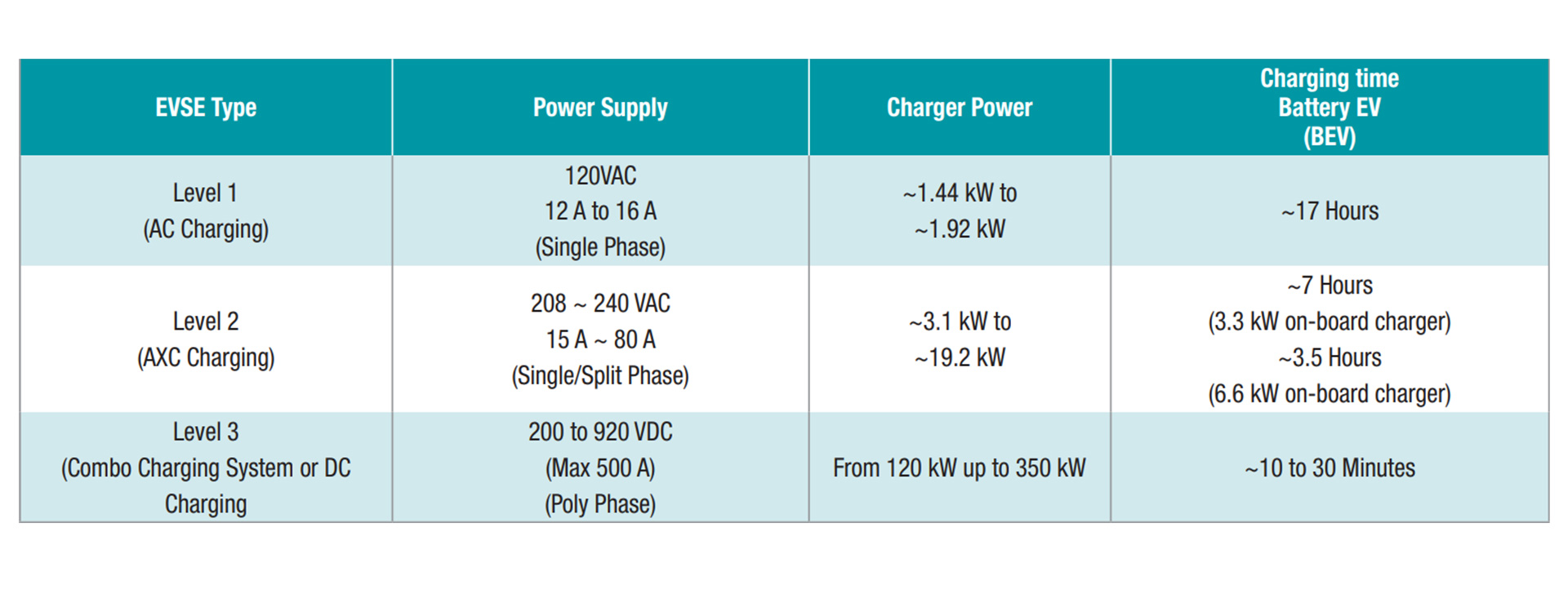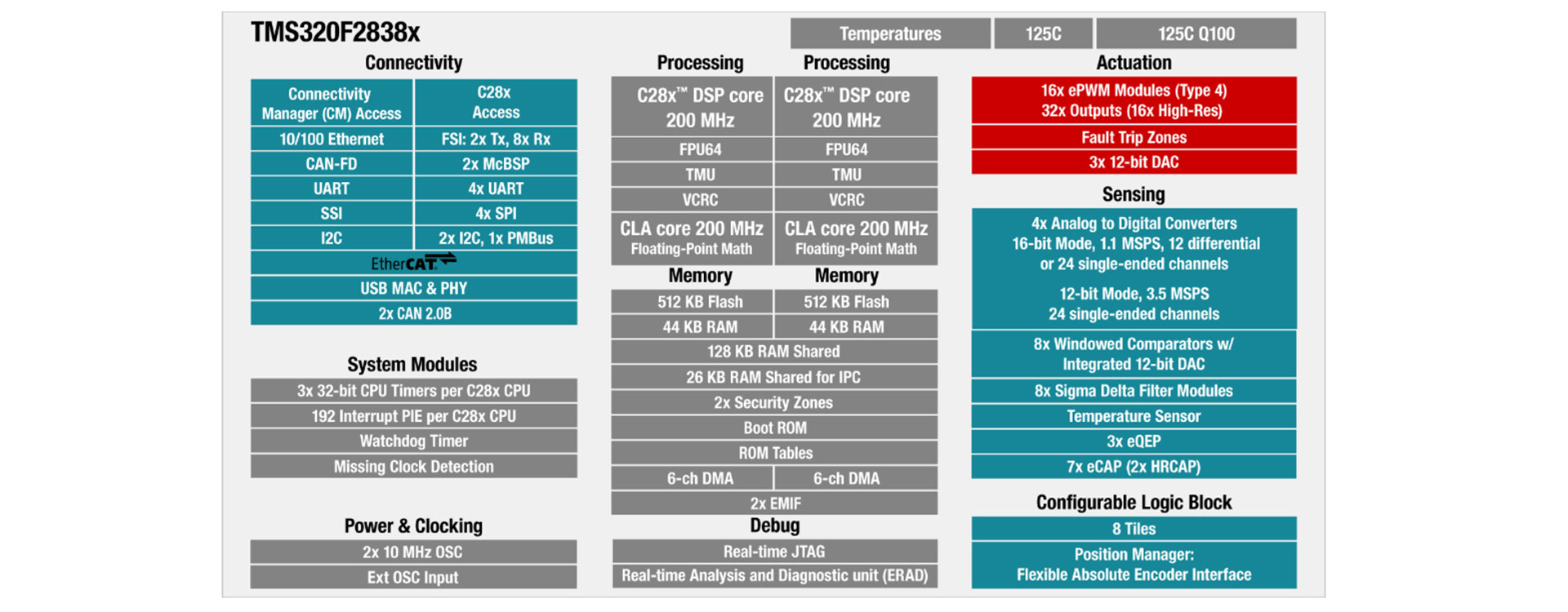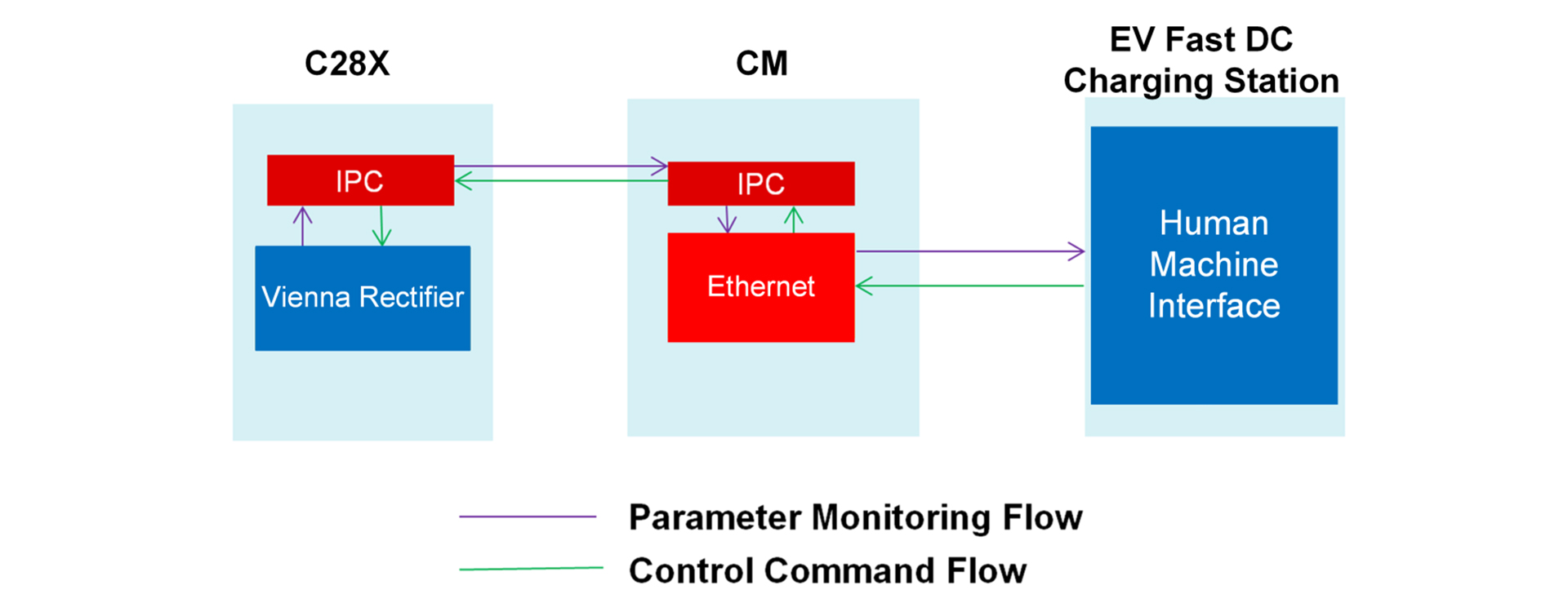SSZT403 october 2019 TMS320F28379D , TMS320F28388D

Automakers are starting to invest heavily in electric vehicles (EVs), with the market expected to grow from around 3 million units in 2019 to 27 million units by 2030; that’s a 21.1% compound annual growth rate, according to a recent report. Such growth will result in a significant uptick in demand for public charging options for EVs.
EV charging stations can be classified into three different levels of electric vehicle supply equipment (EVSE). Figure 1 lists the differences between the three types.
 Figure 1 Classification of EV
chargers
Figure 1 Classification of EV
chargersLevel 3 EVSE (DC fast charger) differs from Levels 1 and 2 in that the AC-to-DC power conversion takes place in the charging station, thus enabling the supply of a high-voltage DC line to the battery and a shorter charging time. To support the high power levels of these DC fast chargers, the AC-to-DC rectifier is a three-phase AC input power factor correction (PFC) stage. A Vienna rectifier is the preferred topology for this stage, given its three-level switching implementation, higher efficiency, low input current harmonics, reduced voltage stresses on components and higher power density.
TI’s Vienna Rectifier-Based Three Phase PFC Reference Design uses the new C2000 F2838x microcontroller (MCU). The F2838x family is the latest addition to the C2000 product portfolio and comes with a connectivity manager capable of offloading critical communication tasks, thereby boosting system performance. Figure 2 is a block diagram for the F2838x family.
 Figure 2 TMS320F28388D block
diagram
Figure 2 TMS320F28388D block
diagramThe new connectivity manager subsystem is based on the Arm® Cortex®-M4 central processing unit. Access to advanced communication protocols like EtherCAT, Ethernet, Controller Area Network with Flexible Data Rate and Advanced Encryption Standard, along with integrated analog and control peripherals, allow designers to consolidate real-time control and communication architectures, reducing requirements for multi-controller systems.
Figure 3 shows the use of a C2000 F2838x device to implement full digital control of a Vienna rectifier-based three-phase PFC converter, together with Ethernet-based start and stop control functionality and parameter (voltage, current, power) monitoring.
 Figure 3 Vienna PFC and Ethernet
configuration
Figure 3 Vienna PFC and Ethernet
configurationAs you can see from Figure 3, there are two data flows: the control command flow and the parameter monitoring flow. In the control command flow, the output voltage reference and command signals like the start PFC signal can be set in the human machine interface (HMI) of the EV charging station to control the Vienna rectifier through the Ethernet and interprocessor communication (IPC) module. The IPC module shown in Figure 3 supports communication between the C28x core and the connectivity manager on the F2838x device. The parameter monitoring flow traces back three-phase current, voltage and power factor information through the IPC and Ethernet modules for monitoring through the HMI. This data is continuously updated and shown in the HMI during the entire charging process.
While it is possible to control a Vienna rectifier and tune the different control loops using TI’s F2837x and F28004x, the latest release of this reference design leverages the connectivity manager on the F2838x device to give applications like DC fast chargers the ability to control and monitor the Vienna rectifier through the HMI.
In order to keep up with the demands of the growing EV market, faster charging times are imperative. Level 3 DC Fast Chargers utilizing a Vienna rectifier topology for the 3-phase AC input PFC stage will allow for a fully charged car in less than 30 minutes. TI’s Vienna Rectifier reference design based on the latest C2000 F2838x device enables customers to implement full digital control of a Vienna rectifier-based three-phase PFC converter, together with Ethernet-based start and stop control functionality and parameter (voltage, current, power) monitoring. Download the reference design to start your Vienna rectifier design today.
Additional resources:
- Check out the TMS320F28388D product folder with data sheet, technical reference manual and samples.
- Explore the latest tools in the TMDSCNCD28388D tool folder.
- Learn more about C2000Ware for C2000 MCUs.
- Download these development kits: